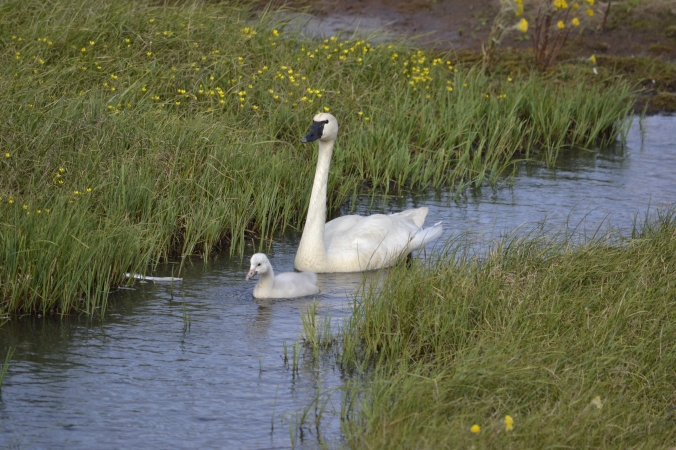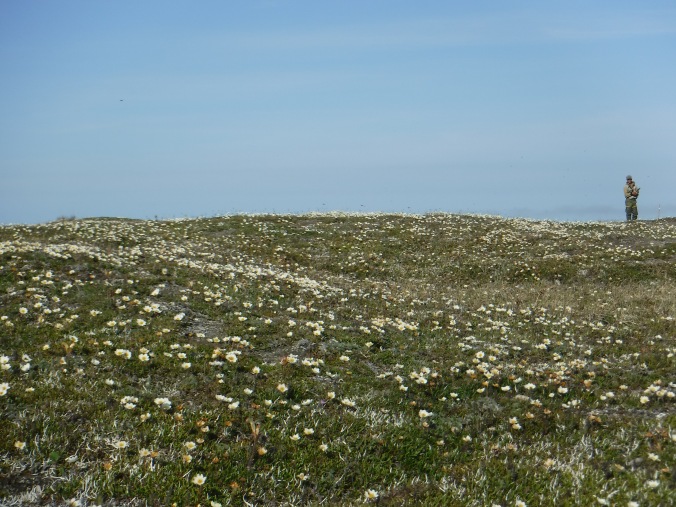
A tundra swan and cygnet swim in one of the Prudhoe Bay study plots. Photo K. Scheimreif.
WCS and BP Exploration (Alaska), Inc. have been working together since 2003 to monitor nesting birds in the Prudhoe Bay area. Each year WCS field researchers head up the Haul Road from Fairbanks on the long drive to Prudhoe, stopping on the way to look for rare or unusual birds such as bluethroats or Arctic warblers. Getting there is part of the adventure.

Dryas flowers bloom on raised ground in one of the drier plots at Prudhoe Bay. Many of the study plots are inundated with water in spring and into summer. Snow and water cover is a parameter measured by the long-term nest monitoring study. Photo K. Scheimreif.
Researchers spend June and July working in 12 plots established in 2003, searching for nests of shorebirds, songbirds, and waterfowl. Nests are marked and monitored throughout the season and the “nest fate” is determined. After birds are no longer observed at the nest, observers search the nest cup and surrounding area for clues of either hatching or depredation. These clues include the presence of broken egg shells, egg membranes and egg teeth left after a successful hatch, and occasionally predator tracks. In addition, researchers conduct predator counts, snow and water surveys, lemming surveys, and keep track of each species seen on each day throughout the field season. All of this in exactly the same locations as in previous years, using the same protocols.
The value of long-term data sets with consistent protocols like these cannot be over-emphasized. They provide a way to quantify ecological responses to a changing environment, data for understanding ecosystem processes that occur over long periods of time, and information useful to land managers (including industry operators) for policy development and decision making (Lindenmayer, et al. 2012). Oftentimes data sets such as these reveal additional information of an entirely different ilk, valuable for other reasons than that for which they were originally intended.

Peter Detwiler measures the length of a shorebird egg before replacing it in the nest. Photo K. Scheimreif.
Literature cited:
LINDENMAYER, D. B., LIKENS, G. E., ANDERSEN, A., BOWMAN, D., BULL, C. M., BURNS, E., DICKMAN, C. R., HOFFMANN, A. A., KEITH, D. A., LIDDELL, M. J., LOWE, A. J., METCALFE, D. J., PHINN, S. R., RUSSELL-SMITH, J., THURGATE, N. and WARDLE, G. M. (2012). Value of long-term ecological studies. Austral Ecology, 37: 745–757. doi:10.1111/j.1442-9993.2011.02351.x